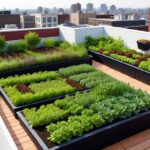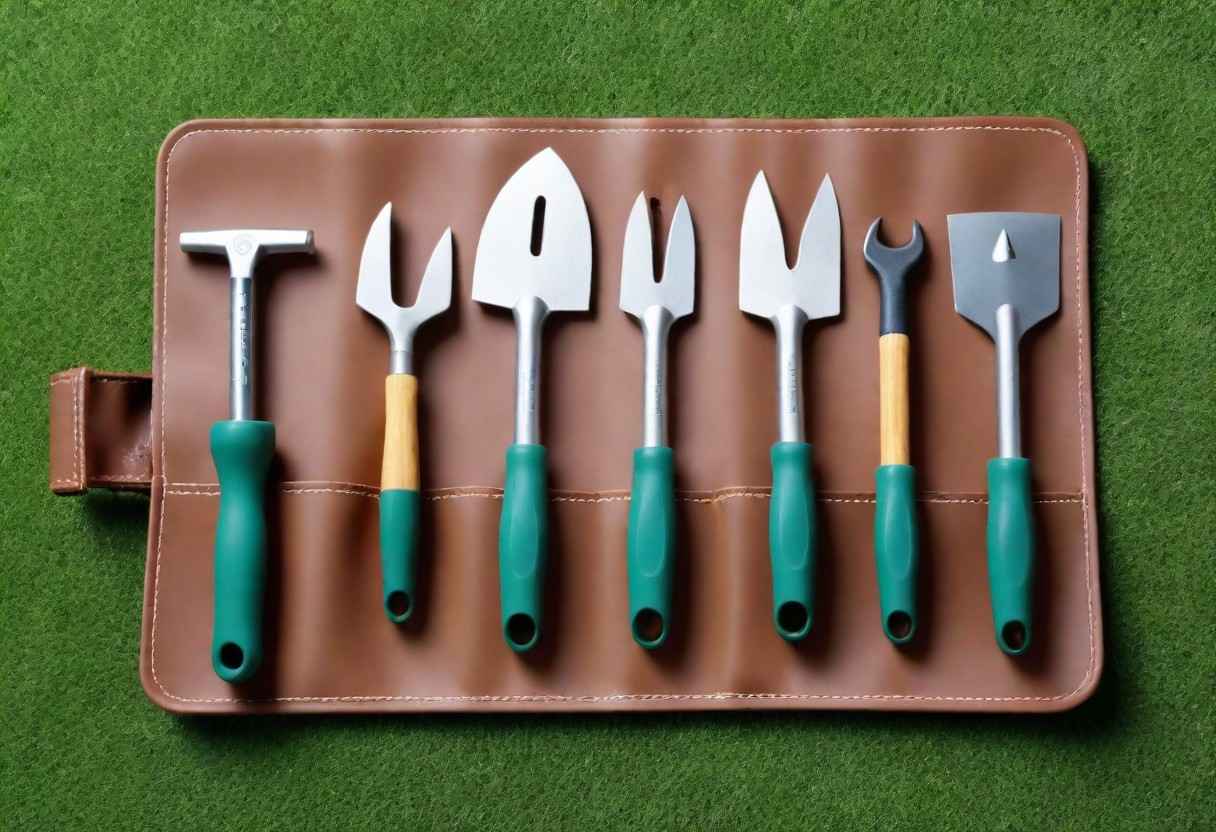As an avid gardener, I am always looking for ways to maximize my space and grow more plants. That’s why I was so excited to discover pyramid gardening. This innovative technique allows you to create a vertical oasis in even the smallest of spaces. In this article, I’ll share everything you need to know to get started with pyramid gardening.

What is Pyramid Gardening?
Pyramid gardening is a technique that involves stacking layers of soil and plants vertically to create a pyramid-shaped garden. The bottom layer is the largest and each subsequent layer gets smaller as you move up the pyramid.
This technique is ideal for small spaces because it allows you to grow more plants in less area. Additionally, because the plants are stacked on top of each other, they receive more sunlight and air circulation, which can lead to healthier plants and higher yields.
Advantages of Pyramid Gardening
One of the biggest advantages of pyramid gardening is that it allows you to grow more plants in a smaller area. This is especially beneficial if you have limited space or want to grow a variety of plants in a small garden.
Another advantage of pyramid gardening is that it can help to improve plant health. Because the plants are stacked on top of each other, they receive more sunlight and air circulation, which can lead to healthier plants and higher yields.
Finally, pyramid gardening is a great way to add visual interest to your garden. The pyramid shape can be a striking focal point in your yard and can add a unique element to your landscape design.
Pyramid Gardening – Steps to follow
Building a pyramid garden is easier than you might think. Here’s how to get started:
Step 1: Gather Materials
To build a pyramid garden, you’ll need the following materials:
- Lumber (2x4s or 4x4s)
- Screws
- Landscape fabric
- Soil
Step 2: Cut Lumber
Cut your lumber into the following lengths:
- Four 4-foot pieces
- Four 3-foot pieces
- Four 2-foot pieces
- Four 1-foot pieces
Step 3: Build the Base
Lay your four 4-foot pieces of lumber on the ground in a square shape. Screw them together to form the base of your pyramid.
Step 4: Add the Second Layer
Lay your four 3-foot pieces of lumber on top of the base, forming a smaller square. Screw them together.
Step 5: Add the Third Layer
Lay your four 2-foot pieces of lumber on top of the second layer, forming an even smaller square. Screw them together.
Step 6: Add the Top Layer
Lay your four 1-foot pieces of lumber on top of the third layer, forming a small square. Screw them together.
Step 7: Add Landscape Fabric
Line the inside of your pyramid with landscape fabric. This will help to prevent soil from falling out of the pyramid.
Step 8: Add Soil
Add soil to each layer of the pyramid, filling it to the top.
Step 9: Plant Your Garden
Plant your garden in each layer of the pyramid. Be sure to choose plants that are suitable for the amount of sunlight and space available in each layer.
Choosing the Right Location for Your Pyramid Garden
When choosing a location for your pyramid garden, it’s important to consider the amount of sunlight and space available. Ideally, you’ll want to choose a location that receives at least 6 hours of sunlight per day. Additionally, you’ll want to ensure that there is enough space to accommodate your pyramid and any surrounding plants.
Selecting Plants for Pyramid Gardening
When selecting plants for pyramid gardening, it’s important to choose plants that are suitable for the amount of sunlight and space available in each layer. Here are some plants that are well-suited for pyramid gardening:
- Tomatoes
- Peppers
- Herbs (such as basil and parsley)
- Lettuce
- Strawberries
Maintaining and Caring for Your Pyramid Garden
To maintain and care for your pyramid garden, you’ll want to water it regularly and fertilize as needed. Additionally, you’ll want to prune any plants that become too large for their layer. This will help to ensure that your pyramid garden stays healthy and productive.
Read more about Gardening on Gardeningtrails.com
Tips for Maximizing Space in Your Pyramid Garden
To maximize space in your pyramid garden, consider planting companion plants that can grow together in the same layer. Additionally, you can plant vining plants (such as tomatoes or cucumbers) at the base of the pyramid and train them to grow up the sides.
Pest Control in Pyramid Gardening
Pests can be a problem in any garden, but they can be especially challenging in a pyramid garden. To control pests, consider using natural pest control methods such as companion planting, crop rotation, and handpicking pests.
Harvesting and Enjoying the Fruits of Your Pyramid Garden
As your plants grow and mature, you’ll be able to harvest the fruits of your labor. Be sure to harvest your plants regularly to encourage continued growth. And don’t forget to enjoy the delicious fruits and vegetables that you’ve grown!
Conclusion – Pyramid Gardening is a way to go!
Pyramid gardening is an innovative technique that allows you to create a vertical oasis in even the smallest of spaces. By following the steps outlined in this article, you can build your own pyramid garden and enjoy the benefits of growing more plants in less space. So why not give it a try? Your green thumb (and your taste buds) will thank you.





